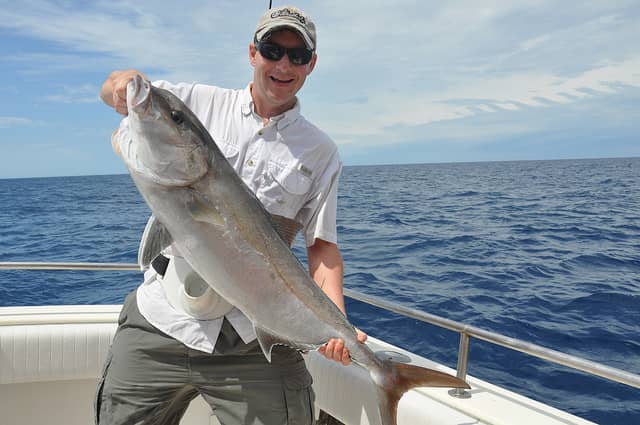Greater Amberjack Recreational Season to Open in the Gulf

Greater amberjack will open for recreational harvest in Gulf of Mexico state and federal waters Aug. 1. The season closes annually June 1.
The minimum size limit for greater amberjack in Gulf of Mexico waters is 30 inches fork length, which is measured from the tip of the fish’s closed mouth to the center of the fork in the tail. In Atlantic state waters, the size limit is 28 inches fork length.
Recreational anglers may take one fish per person, per day. Reef fish gear rules apply when fishing for greater amberjack. In Gulf waters, this means anglers must use circle hooks, and have a dehooking device and a venting tool on their vessel.
Using these tools will help increase a fish’s chance of survival if it is caught and returned to the water.
State waters in the Gulf extend from shore to nine nautical miles and in the Atlantic from shore to three nautical miles; federal waters extend from those boundaries to about 200 miles from shore.
Learn more about greater amberjack by visiting MyFWC.com/Fishing and clicking on “Saltwater Fishing,” “Recreational Regulations” and “Amberjack.”

